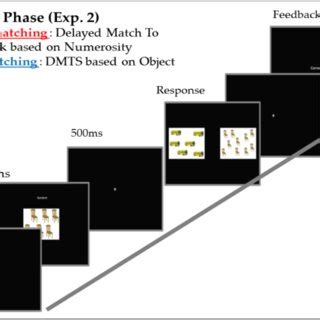How to break strength plateaus and optimize muscle growth for peak male performance?

Conquering Strength Plateaus: A Blueprint for Advanced Muscle Growth
Every dedicated lifter eventually faces the frustrating wall of a strength plateau. That moment when your progress stalls, and despite your best efforts, the numbers on the bar refuse to budge. For men aiming for peak physical performance, breaking through these barriers and continuously optimizing muscle growth is paramount. It’s not just about lifting heavier; it’s about strategic training, meticulous nutrition, and superior recovery. This comprehensive guide will equip you with the knowledge and tools to shatter your plateaus and unlock new levels of strength and hypertrophy.

Understanding the Plateau Phenomenon
A strength plateau is a sign that your body has adapted to the current training stimulus. While adaptation is the goal of training, over-adaptation without further progression leads to stagnation. Common causes include:
- Insufficient Progressive Overload: Not consistently challenging your muscles with increased resistance, reps, or volume.
- Overtraining or Under-recovery: Pushing too hard without adequate rest, leading to fatigue and diminished performance.
- Nutritional Deficiencies: Not consuming enough calories, protein, or micronutrients to support repair and growth.
- Lack of Variation: Performing the same exercises and routines for too long, leading to neural and muscular adaptation without new challenges.
- Poor Form: Inefficient movement patterns that limit your strength potential and increase injury risk.
Strategic Training for Breakthroughs
To reignite progress, you need to introduce new stimuli and intelligently manipulate your training variables.
1. Implement Periodization and Deloads
Structured periodization involves varying your training intensity and volume over specific cycles (e.g., strength phase, hypertrophy phase, power phase). This prevents overtraining and allows for strategic recovery. Regular deload weeks (reducing volume/intensity by 50-70%) every 4-8 weeks are crucial for allowing your central nervous system and muscles to recover and supercompensate, priming you for new gains.
2. Vary Your Training Stimuli
Don’t just stick to the same exercises. Introduce variations of compound lifts (e.g., incline bench press, deficit deadlifts, front squats) or incorporate accessory exercises that target weak points. Experiment with different rep ranges (e.g., 3-5 reps for strength, 8-12 reps for hypertrophy, 15-20 reps for endurance) and intensity techniques like drop sets, supersets, rest-pause, or forced reps (with a spotter).

3. Optimize Progressive Overload
Progressive overload is the cornerstone of muscle growth. Beyond just adding weight, consider these methods:
- Increase Reps: Do more reps with the same weight.
- Increase Sets: Add an extra set to an exercise.
- Increase Frequency: Train a muscle group more often.
- Decrease Rest Times: Perform the same work in less time.
- Improve Form: Lift the same weight with stricter technique.
- Increase Time Under Tension: Slow down the eccentric (lowering) phase of a lift.
Fueling Muscle Growth: Nutrition and Recovery
Your efforts in the gym are only as effective as your commitment to nutrition and recovery outside of it.
1. Prioritize Protein Intake
Muscle protein synthesis requires a consistent supply of amino acids. Aim for 1.6-2.2 grams of protein per kilogram of body weight daily, spread across multiple meals. Lean meats, poultry, fish, eggs, dairy, and plant-based proteins are essential.
2. Caloric Surplus for Growth
To build muscle, you generally need to be in a slight caloric surplus (consuming more calories than you burn). Focus on nutrient-dense carbohydrates for energy (whole grains, fruits, vegetables) and healthy fats for hormonal health (avocados, nuts, olive oil).
3. The Power of Sleep and Active Recovery
Sleep is when your body repairs and rebuilds. Aim for 7-9 hours of quality sleep per night. Active recovery (light cardio, stretching, foam rolling) can enhance blood flow and reduce muscle soreness, aiding the recovery process.

Hormonal Balance and Mind-Muscle Connection
Optimal hormonal function is critical for muscle growth and overall male performance. Ensure adequate intake of zinc, magnesium, and Vitamin D. Manage stress, as chronic stress can elevate cortisol, hindering muscle growth. Furthermore, consciously focus on contracting the target muscle during each rep. This mind-muscle connection can significantly enhance muscle activation and growth, especially in isolation exercises.
Tracking Progress and Staying Consistent
Document your workouts: weights, reps, sets, and even how you felt. This data is invaluable for identifying patterns, making informed adjustments, and celebrating small victories. Consistency is the ultimate key. There will be good days and bad days, but showing up and sticking to your plan, even when motivation wanes, is what separates those who plateau from those who continually progress.

Conclusion: Your Path to Peak Performance
Breaking strength plateaus and optimizing muscle growth is a multifaceted endeavor that requires a holistic approach. By intelligently manipulating your training variables through periodization and varied stimuli, optimizing your nutrition for fuel and repair, prioritizing recovery, and cultivating a strong mind-muscle connection, you can consistently challenge your body and achieve superior results. Embrace the journey, listen to your body, and remain persistent – peak male performance is within your grasp.





